-
Foreign investment in agriculture increases productivity of subsistence farming
The improved infrastructure brought about by foreign investment could increase the productivity of subsistence farmlands in countries such as Indonesia and Papua New Guinea and could mean these lands can feed at least 300 million people around the world. This is compared to about 190 million people that could be fed if the land was left tended to by the local population. The most targeted countries for land grabs are Indonesia, Malaysia, Papua New Guinea, and the former Sudan. Altogether, these nations account for around 82 percent of the total food calories that can be produced by acquired croplands worldwide.
-
-
Reducing use of nitrogen-based fertilizers helps combat climate change
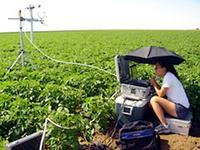
Nitrogen-based fertilizers spur greenhouse gas emissions by stimulating microbes in the soil to produce more nitrous oxide. Nitrous oxide is the third most important greenhouse gas, behind only carbon dioxide and methane, and also destroys stratospheric ozone. Agriculture accounts for around 80 percent of human-caused nitrous oxide emissions worldwide, which have increased substantially in recent years, primarily due to increased nitrogen fertilizer use. Scientists help farmers around the globe apply more-precise amounts of nitrogen-based fertilizer to help combat climate change.
-
-
Drones offer farmers eyes in the sky to check on crop progress
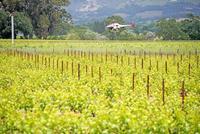
Commercial use of unmanned aerial vehicles in U.S. airspace was banned by the Federal Aviation Administration in 2007, although growing numbers of hobbyists have been toying with the use of drones, particularly for aerial photography. Facing mounting pressure from agribusiness, retail, and other industries, however, the FAA is expected to release new policies by 2015 that will enable businesses to integrate drones into their operations. The agriculture industry is expected to be one of the largest market segments for drone usage. This growing season, crop researchers at the University of Illinois are experimenting with the use of drones on the university’s South Farms. A crop sciences educator is using two drones to take aerial pictures of crops growing in research plots on the farms.
-
-
Dramatic drop in Central Valley wintertime fog threatens California’s agricultural industry

California’s winter tule fog — hated by drivers, but needed by fruit and nut trees — has declined dramatically over the past three decades, raising a red flag for the state’s multibillion dollar agricultural industry, according to researchers at UC Berkeley. Many crops go through a necessary winter dormant period brought on and maintained by colder temperatures. Tule fog, a thick ground fog that descends upon the state’s Central Valley between late fall and early spring, helps contribute to this winter chill. The findings have implications for the entire country since many of these California crops account for 95 percent of U.S. production.
-
-
Large areas of Plains states now drier than during Dust Bowl
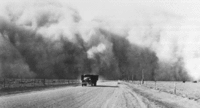
As a result of the drought conditions that have largely remained a constant since 2011, parts of the Texas and Oklahoma panhandles, as well as northeastern New Mexico and southeaster Colorado, are now drier than they were during the infamous Dust Bowl of the 1930s. While experts explain that the possibility of another Dust Bowl is not likely due to modern farming and irrigation techniques which have been enacted as a response in the 1930s, greater erosion due to drought and wind has resulted in a number of vicious dust storms.
-
-
Farmers try to cope with the challenges posed by extreme weather
Across the country, farmers are reporting that they are at yet another critical juncture for agriculture. Citing more unpredictable and severe weather due to climate change, scientists are researching defensive measures and looking to previous agricultural challenges for inspiration. Some are looking to the way individual farmers and government agencies addressed the Dust Bowl hardships of America during the Great Depression as a source of inspiration.
-
-
California bill banning use of antibiotics in livestock withdrawn
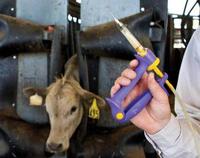
The Centers for Disease Control and Preventionreports that 23,000 people die every year from infections that cannot be cured, often due to overuse of antibiotics which creates drug resistant bugs. Last Wednesday, California Assemblyman Kevin Mullin (D-San Mateo) withdrew proposed legislation which would ban the sale of meat and poultry fed on nontherapeutic antibiotics. He lacked sufficient support from fellow legislators.
-
-
U.S. corn yields increasingly vulnerable to hot, dry weather
The United States produces 40 percent of the world’s corn, mostly in Iowa, Illinois, and Indiana. As more than 80 percent of U.S. agricultural land relies on natural rainfall rather than irrigation, corn farmers in these regions depend on precipitation, air temperature, and humidity for optimal plant growth. U.S. corn yields are growing more sensitive to heat and drought. Farmers are faced with difficult tradeoffs in adapting to a changing climate in which unfavorable weather will become more common.
-
-
New bug sensor saves crops, people
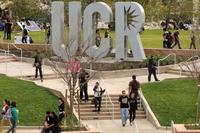
For hundreds of years humans have attempted to kill unwanted insects. While some blanket methods have been successful, they can be costly and create environmental problems. A new sensor developed by UC Riverside researchers aims to change that by counting and classifying the insects so that the substance used to eradicate the harmful insects can be applied on a precision targeted level. The inexpensive wireless sensors have 99 percent accuracy, and they are expected to have applications fighting insect-borne diseases, such as malaria, and insects that damage crops.
-
-
Vermont mandates labeling of foods containing GMOs
On Wednesday, legislators in Vermont passed a billrequiring the labeling of foods which contain genetically modified organisms (GMOs), making the state the first in the United States to pass such a law without contingencies. Proponents of the law, and of similar attempts across the country, hailed the legislative approval as a victory. About twenty other states have pending measures regarding labeling GMO-based foods, but the biotech and food industries have been lobbyingfederal legislators to prevent such measures.
-
-
PathSensors introduces portable pathogen identifier system
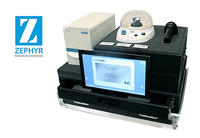
Baltimore, Maryland-based PathSensors, Inc. has introduced the portable Zephyr Pathogen Identifier system. The company says it delivers rapid, reliable detection of bacteria, virus, and toxins in powder and liquid samples in minutes. The Zephyr Identifier uses CANARY (Cellular Analysis and Notification of Antigen Risks and Yields) technology, which is licensed from the MIT-Lincoln Laboratory.
-
-
Court to decide a Minnesota’s “Buy the Farm” case
Minnesota’s “Buy the Farm” law is the center of a case set for trial later this week, in which developers of CapX2020, the region’s power grid improvement project, will contest a lawsuit by Cedar Summit Farm. The state law requires utilities building high-voltage power lines to buy out farms along the path of the power line if the affected landowners demand it. CapX2020 argues the farm does not meet the buyout criteria set in the law.
-
-
“Dressed” laser aims at clouds to induce rain, lightning
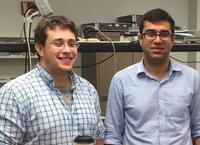
The adage “Everyone complains about the weather but nobody does anything about it,” may one day be obsolete if researchers further develop a new technique to aim a high-energy laser beam into clouds to make it rain or trigger lightning. The researchers work on surround the beam with a second beam to act as an energy reservoir, sustaining the central beam to greater distances than previously possible. The secondary “dress” beam refuels and helps prevent the dissipation of the high-intensity primary beam. Gaining control over the length of a filament would allow the creation of the conditions needed for a rainstorm from afar. People could thus artificially control the rain and lightning over a large expanse.
-
-
Britons worry that new EU food inspection rules would risk U.K. food safety
The European Food Safety Authority(EFSA) in June will introduce a new Europe-wide food inspection regime, arguing that there is a need to modernize the food inspection process. The EFSA plans to reduce seventy pieces of detailed regulation down to a framework of five overarching laws to “reduce the burden on business.”Among other things, the new rules will replace laws that list diseases banned from the meat supply with a more general requirement on safety, health, and welfare. The EFSA claims that many of the diseases and parasites inspectors currently find are harmless to humans and are not considered major animal diseases. U.K. consumer advocates, meat inspectors, and veterinarians say the new rules threaten the safety of the U.K. food supply.
-
-
Food-related disease outbreaks can teach us about the consequence of food terrorism
Since unintentional food-related outbreaks have become so common, policy makers could use data from unintended foodborne disease outbreaks to estimate the effects of intended foodborne disease outbreaks. The impact on trade and economies is the primary motive for food terrorism, according to the World Health Organization (WHO), but beyond the financial loss, such intended foodborne disease outbreaks may even impact political stability.
-
- All
- Regional
- Water
- Biometrics
- Borders/Immig
- Business
- Cybersecurity
- Detection
- Disasters
- Government
- Infrastructure
- International
- Public health
- Public Safety
- Communication interoperabillity
- Emergency services
- Emergency medical services
- Fire
- First response
- IEDs
- Law Enforcement
- Law Enforcement Technology
- Military technology
- Nonlethal weapons
- Nuclear weapons
- Personal protection equipment
- Police
- Notification /alert systems
- Situational awareness
- Weapons systems
- Sci-Tech
- Sector Reports
- Surveillance
- Transportation
Advertising & Marketing: advertise@newswirepubs.com
Editorial: editor@newswirepubs.com
General: info@newswirepubs.com
2010-2011 © News Wire Publications, LLC News Wire Publications, LLC
220 Old Country Road | Suite 200 | Mineola | New York | 11501
Permissions and Policies
Editorial: editor@newswirepubs.com
General: info@newswirepubs.com
2010-2011 © News Wire Publications, LLC News Wire Publications, LLC
220 Old Country Road | Suite 200 | Mineola | New York | 11501
Permissions and Policies
